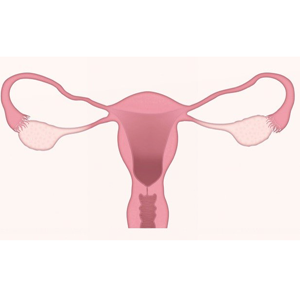Comparison of levator hiatal area and anteroposterior length between pelvic organ prolapse subject with and without bulging symptoms

All claims expressed in this article are solely those of the authors and do not necessarily represent those of their affiliated organizations, or those of the publisher, the editors and the reviewers. Any product that may be evaluated in this article or claim that may be made by its manufacturer is not guaranteed or endorsed by the publisher.
Accepted: 20 April 2022
Authors
Pelvic Organ Prolapse (POP) is defined as the descent of the pelvic viscera (uterus, bladder, urethra, and rectum) from its normal position. There are different stages of POP starting from early asymptomatic until late obvious symptomatic stages. Levator Anal Muscle (LAM) which plays an important part in POP pathogenesis, showed that there was difference in Levator Hiatal (LH) area and anteroposterior length on every grade of POP. It is important to determine early diagnose of asymptomatic POP clinically by anteroposterior length measurement, and determined its relation with LH area measurement using Ultrasound (US) imaging. To compare LH area and anteroposterior length between POP subject with and without bulging symptom. A cross-sectional study was conducted among women diagnosed as POP with and without bulging symptom in a Urogynecology Clinic between November 2019 to March 2021. Patients were examined using the POP-Q system and 3D/4D imaging of the LH area using Voluson type systems. Data were analyzed to compare LH area and anteroposterior length between groups. A total of 109 subjects were included in this study. There was a significance difference in LH area (28.9+5.59 cm2 vs 19.6+4.63 cm2, p < 0.05 during valsalva maneuver, 15.2+4.08 cm2 vs 12.5+3.15 cm2, p <0.05 during contraction) and anteroposterior length (8.6+1.06 cm, vs 6.8+1.13 cm, p<0.05) between groups with and without bulge symptom. LH area and anteroposterior length cut-off to differentiate between subject with and without bulging symptom was respectively 25,1 cm2 [sensitivity 84,6%, specificity 92,9%, AUC 0,925 (0,864-0,986)] and 7,75 cm [sensitivity 87,2%, specificity 77,1%, AUC 0,859 (0,787-0,932)]. In patient without bulging symptom there was a significant difference of anteroposterior length between prolapse stage 1, 2, and 3. Post hoc analysis with Tukey test showed a significant difference of anteroposterior length only between grade 0 and 2, and grade 1 and 2. There was a significant difference in LH area and anteroposterior length between groups with and without bulging symptom. LH area cut-off at 25,1 cm2, anteroposterior length cut-off at 7.75 cm showed good sensitivity and specificity to differentiate between 2 groups.






